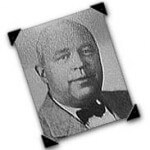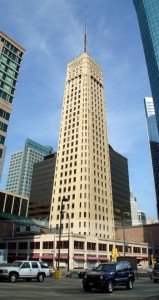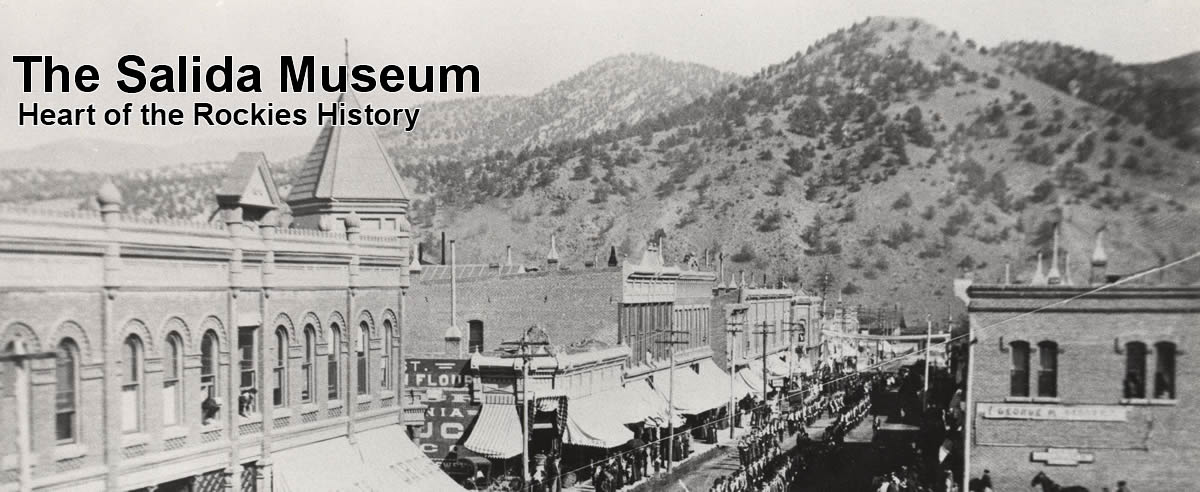
Long before Bernie Madoff and about the same time as Charles Ponzi a Minneapolis business man was buying up utilities and creating an empire. In August 1929 he celebrated the opening of his building, The Foshay Tower, the opening was attended by political notables and celebrities from all over the country. But before he could move into the building that took him 3 years to bring to this point, a devastating event happened that effected the whole country and Foshay. In October of 1929, when the stock market crashed so did his empire. He fooled others and built a landmark and landed in federal prison for a few years and, for a time, brought his dynamic approach to life to Salida, the “Heart of Colorado“.
Born in 1881 in Ossining, New York, Wilbur B. Foshay was an American businessman, who built a fortune buying utilities throughout the Midwest in the early 20th century. Foshay built the Foshay Tower in Minneapolis, Minnesota, which opened in August 1929. In 1932 he was convicted of conducting a “pyramid scheme” with shares of his own stock. He was sentenced to 15 years in prison. President Franklin Roosevelt commuted 10 years from Foshay’s sentence, but Foshay only actually served three years in Leavenworth because of “good behavior.” President Harry Truman granted Foshay a full and unconditional pardon in 1947.
Foshay’s trial was a public spectacle at the time. Journalists, investors, and the general public all wanted to know how Foshay had misled them. At one point during the trial, Foshay claimed he was colorblind to explain peculiar marks in his accounting books—“in the red” and “in the black” were marked by symbols rather than ink color, when really these marks represented which entries were artificially inflated. The trial lasted six weeks. The jury deliberated, but could not reach a consensus. All the male jurors voted for conviction, but Mrs. Genevieve Clark stubbornly held out. A mistrial was declared.
It was later discovered that Genevieve Clark had worked for the Foshay Company at one time, and that her husband knew Foshay personally through doing business with him. Clark was charged with contempt of court. A Supreme Court appeal failed. She was sentenced to six months in prison. Clark was publicly humiliated for her actions as a juror in the case. To avoid surrendering to authorities, she and her family disappeared. Clark, her husband and two young boys were found dead from intentional carbon monoxide poisoning. A second trial was held, and Foshay was convicted and sentenced to 15 years in prison.
The Foshay Tower, now the W Minneapolis – The Foshay hotel, is a skyscraper in Minneapolis, Minnesota. Modeled after the Washington Monument, the building was completed in 1929 months before the stock market crash in October of that year. It has 32 floors and stands 447 feet (136 m) high, plus an antenna mast that extends the total height of the structure to 607 feet (185 m). The building, which was added to the National Register of Historic Places in 1978, is an example of Art Deco architecture. Its address is 821 Marquette Avenue, although it is set well back from the street and is actually closer to 9th Street than Marquette.
The Foshay Tower was designed by Léon Eugène Arnal, chief designer for the architects Magney & Tusler, later known as Setter, Leach & Lindstrom, which was acquired by Leo A. Daly in 2003. The building has the name FOSHAY in 10 foot lighted letters on all four sides just below the top. A U.S. patent for this display technique was filed in 1929 by Gottlieb R. Magney, Wilbur Tusler and Arnal and granted in 1931, assigned to the W. B. Foshay Co.

Foshay Tower was the lifelong dream and namesake of Wilbur Foshay, an art student turned businessman who amassed his fortune by building up three utility company empires (operating as the W. B. Foshay Company). At the time the tower was being built, he had sold his previous two empires in turn and was building up his third (which was eventually to stretch from Alaska to Nicaragua). He planned to locate his business and residence on the twenty-seventh and twenty-eighth floors where a three-bedroom, three-bath suite was built, with a fireplace and library, Italian Siena marble walls and glass-paneled ceilings. Foshay invited 25,000 guests to the dedication ceremony and provided all-expenses paid trips to many who included cabinet members, senators and congressmen. Half nude dancers entertained. Each guest received a gold pocket watch. The military gave 19-gun salutes. John Philip Sousa conducted music, including “Foshay Tower–Washington Memorial March” a march he wrote for the occasion. Foshay presented Sousa with a check for $20,000.
The march was only played once during Foshay’s lifetime. Six weeks after the building’s opening on November 2, 1929, Foshay’s corporate empire was thrown into receivership at the onset of the Great Depression. Ignominiously, Foshay’s check to Sousa bounced, and in retaliation, Sousa prohibited the playing of the march so long as Foshay’s debt to him remained outstanding. Foshay never lived in his new home, which also went into receivership. It wasn’t until 1988 when a group of Minnesota investors repaid Foshay’s debt to Sousa’s estate that the march was permitted to be played in public again.
When the stock market collapsed disaster struck Foshay Enterprises and it went into receivership. Wilbur Foshay left the Twin Cities area and moved to Salida, Colorado. He was ask to work as the manager at the Monarch Granite Company by the owner, Mr. Walgreen. The business was in trouble and was beyond help even from the great promoter and went out of business in just a couple of years. He found other work in Salida to try to support his family, still back in Minneapolis, but two years into his new life he found he was being indicted back in Minneapolis on the grounds of mail fraud. He traveled back to Minneapolis along with one of his old business partners to defend his name in regards to his former empire. Later, they went to trial and Foshay was sentenced to 15 years in prison. He served just a few years in Leavenworth Penitentiary before his new Salida friends could get President Roosevelt to grant him executive clemency.
Foshay returned to Salida and was ask by the president of the chamber of commerce, William Alexander, to take a newly created full-time position in Salida as the Secretary of the Chamber of Commerce, a job that paid him under two thousand dollars a year. Soon his promotional ideas began to flow and big yellow signs reading “Follow The Hearts to Salida” blanketed much of the country covering over 4,000 miles in all direction from his new adopted home town. It was a bombastic beginning for the super-salesman. His tenacity to promote Salida prompted such notables as the great American journalist Ernie Pyle to journey to Salida to investigate such things as the fur-bearing trout, another Foshay “discovery.” Pyle marveled even more at the man, Wilbur Foshay, and wrote . . . “If you haven’t heard of Salida, you better keep it good and quiet. There’s a man here who eats people who haven’t heard of Salida.” The legend of the fur-bearing trout had begun to grow, and Governor Ralph Carr made the trip to Salida to examine it in person. It still is one of the great stories of the town of Salida.
Ernie Pyle, famous WWII American journalist, described Foshay as “a human dynamo . . . and as he whirls around he ejects sparks which dance and twinkle and then form themselves into golden word ‘Salida’ across the heavens. Mr. Foshay IS the Salida Chamber of Commerce.” But time passed and in 1945 Wilbur B. Foshay left Salida and moved on to another Colorado town. He coined the phrase “The Singing Sands of Alamosa” . . . then to Fort Collins where he met some resistance to his style of promotion. The display of the posters which made Salida famous met with opposition when used in a similar manner in Ft. Collins. He left “the Eden of Colorado” after a dispute over posters. Eventually his son brought him back to Minneapolis because his father was destitute and trying to exists on just a small amount of Social Security. Wilbur Foshay suffered a stroke shortly after arriving in Minneapolis to live with his son and was put in an assisted living institute. He died on the 28th anniversary of the dedication of the Foshay Tower. August 31, 1957. He was 76 years old.
See the Mysteries at the Museum episode Furry Fishtail on the Travel Channel, about the fur-bearing trout.

I use this source for my school project and it had a lot of information thank you ??!!
You guys are awesome ?